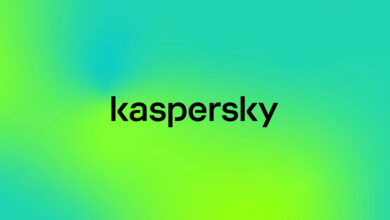
Choosing the most suitable database for a company means facing all kinds of possibilities of choice. Perhaps the first, and most important, is to choose a open source database or an owner. Namely, one open source, usually free, or a property of a company. In view of this, the first advantage of open source databases is obvious: they avoid having to face a large financial outlay, since it is not necessary to buy their license from a manufacturer. Unless you have very concrete and specific needs, but the proliferation of open source databases in recent years, as well as various plugins for them, makes them increasingly attractive even for very specific purposes.
Meanwhile, the popularity of proprietary, commercially licensed database systems has been falling over the last five years. And according to DB-Engines’ list of database management systems, they have been outperformed by open source databases in many cases when it comes to enterprise adoption.
Advantages of open source databases
An open source database is an open database management system that is free to use, and perhaps one of the few disadvantages it has compared to proprietary databases is that it does not have a technical support service from a provider, something that proprietary databases do have. But precisely from this disadvantage arises one of its advantages.
Open source databases have a large community of users who, in many cases, not only share their knowledge in forums and specialized user groups, but in many cases are willing to help other users with specific problems and needs with them. .
In addition, the information that is stored in an open source database belongs to whoever inserts it into it. Without any type of restriction. You can also modify it to adapt it to your needs, although for this you need to have some development knowledge. You can create applications and plugins based on the open source software of your choice, in much the same way as for example with the WordPress CMS. Therefore, open source databases offer you endless possibilities for customization and extension.
The main open source databases
The number of open source databases is growing more and more as the years go by. However, among all the possibilities, there are several that, according to TechTarget, either because of their simplicity and robustness, or because of their possibilities and ease of expansion and customization, are the ones that achieve greater adoption and deployment in companies. Among them are the following five, perhaps the most popular and used.
mysql
Without a doubt, MySQL is the most widespread of the open source databases, and for many years, the default option for many developers when choosing a database. Oracle got hold of it many years ago when it bought Sun Microsystems, and it’s a relational database management system. This means that it uses tables to store the data, and the types of data stored must be related to each other in some way. It has an open source edition and some paid versions, and due to its popularity there are many third-party tools for it, as well as a significant amount of documentation focused on making it easy to learn.
the basis of mysql originated from an old proprietary database system, keep most of its compatibility, and make the results open source. Its creators focused on speed, and today it is still considered among the fastest database options. In addition to speed, it has a script that contributes to improving the security of user databases. This database is compatible, among others, with the programming languages C, C++, Java, Python and Ruby.
However, it is a dual-licensed database. This implies that some of its features and plugins are only accessible in paid proprietary editions. As for its learning curve, it is not very high. You don’t need to know much SQL to use it, and you can work with the database from the command line. MySQL has high compatibility with virtually any operating system. It is a robust, fast and versatile database, making it suitable for many use cases.
MariaDB
When Oracle bought Sun, and with it MySQL, there were those who did not take it very well, because although Oracle has kept MySQL open source, the company does not have much of a reputation as an open source advocate. One of those who did not believe Oracle was one of the founders of MySQL himself, who left the company to create MariaDB, a fork of MySQL with almost complete compatibility with it.
It can be used as a replacement for just about everything in MySQL, although it has several unique features that set it apart. For starters, MariaDB uses the Aria storage engine to handle complex SQL queries. This makes the database even faster than MySQL. Also, you can use dynamic rows as table columns, which makes it more flexible and adaptable to various situations.
In addition, it has specialized storage engines for specific use cases that MySQL does not have. For example, it allows you to implement distributed storage or distributed transactions. As we have mentioned, you can use MariaDB in the same assumptions and cases as MySQL, but there is no compatibility between the two, so you will have to choose which of the two you want to use.
PostgreSQL
This relational and open source database is widely used in data science and graph creation, and also in the Artificial Intelligence sector. The latter is due to PostgreSQL it is specially intended for Python and Ruby applications. However, it is also compatible with PHP. It has been developed with elegance in mind, and has quite a few distinct features. These include the ability to implement asynchronous replication, and native support for JSON or XML style document storage.
In addition, PostgreSQL supports full-text database searches, and has several built-in data types that are valuable for some applications, such as ranges, arrays, and geolocation. However, it is not very well suited for applications that require read-intensive operations, and regular data reporting can make document storage thinner if you have a very large set of data to store.
Redis
This open source database is different from the most used ones, since it is mainly used in completely different situations. It is a database that allows you to structure data as key value pairs. Therefore, it is a system similar to PHP associative arrays or Python dictionaries. In fact, Redis it is a system for quickly linking data for later reference. It is considered the best choice as a database for caching, and also for working with distributed data.
For starters, it’s an in-memory storage solution, entirely in RAM. This means that its read and write speeds are very fast. To learn its basics you don’t need much time either, since you can learn them in minutes and start quickly with the storage of objects in it. That yes, it may not be very useful for complex applications, but it is enough to use it together with other databases, such as MariaDB, for the rest of the application that is being developed.
SQLite
also relational, SQLite is an open source database composed of a small, lightweight library that provides a database engine. Despite its lightness, it allows generating databases of hundreds of Terabytes, and a maximum row size of one Gigabyte. Even with files of this size, SQLite is still fast. In addition, it is compatible with Java, Python, C or C++, among other languages.
It has dozens of use cases, and for example, simple app developers will find it very useful. It is integrated into smartphones and many computers. It is also highly valued in Internet of Things applications and low-traffic websites. That is if, due to its structure, it is not indicated for sites with a lot of traffic, since its performance suffers. In addition, it has certain limitations that in some cases may be important.
These mean that, among other things, it is not indicated in applications that have to be accessed by several users with special access permissions. SQLite reads and writes to an ordinary disk file, so the only applicable access permissions for this database are those normally included in the operating system.


